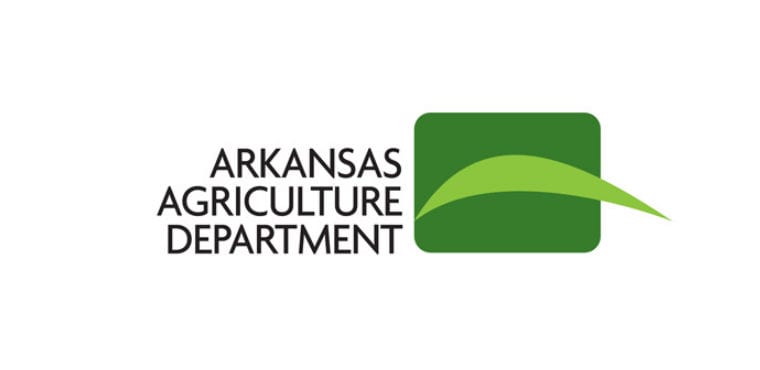By Ryan McGeeney
U of A System Division of Agriculture
Pasture managers across Arkansas are reporting extraordinarily low yields from first cuttings.
Kenny Simon, instructor and extension forage specialist for the University of Arkansas System Division of Agriculture, said growers are seeing yields from first cuttings of ryegrass and other forage grasses reduced anywhere from 25 to 75 percent of expectations.
According to the July 10 Crop Progress report from the National Agricultural Statistics Service, 81 percent of non-alfalfa hay was in good or fair condition, with 11 percent rated poor or very poor. The same report showed 24 percent at a second cutting of hay, compared to 50 percent last year. Ninety-eight percent had completed a first cutting of hay, just short of last year’s 100 percent.
Simon said that with record-high fertilizer prices last year — doubling and nearly tripling in some cases — many growers chose to put out less fertilizer in fields than they typically would.
“Or perhaps none at all,” he said.
“But this low fertility issue is not something that’s come about overnight,” Simon added. “It’s an accumulation of several years.”
Simon said that despite outreach efforts by the Cooperative Extension Service and other farming resources, there persists a widespread misunderstanding of soils’ true nutritional needs.
“It’s typical that a producer will fertilize a field with a complete fertilizer early in the season, then only come back with nitrogen as needed,” he said. “We’ve been doing our best to educate growers about the importance of soil fertility and the correct fertilizer applications.
“Of course, sometimes it’s simply the case that the producers understand what they need to be doing, but it’s just not economically feasible,” he said.
Other issues have conspired to affect the year’s hay crop as well. Les Walz, extension agriculture and natural resources educator, said the first cutting in the state fell victim to the “perfect storm.”
“Last year, we had the drought across a large portion of the state,” Walz said. “Nobody wanted to fertilize during a drought, especially given the high prices, so we had low-fertility fields going into the winter.
“Then we had that freeze the week of Christmas, where we had single-digit temperatures, and we got a lot of winterkill on some of our warm season perennial grasses, like Bermuda and bahia, as well as turfgrass and some ornamentals” he said.
This year’s notably wet spring was then capped off by an unusually cool May, with overnight temperatures consistently in the 50s in the northern part of the state. The southern portion of the state saw those cool temperatures during the first week of May, which Walz said delayed their growth.
“With 50-degree nights, the warm season grasses really didn’t take off,” Walz said. “All those things fell in line to add up to a really bad first cutting.”
Most cattle and hay producers in Arkansas tend to let cattle graze those pastures for much of the first half of the year, Simon said, executing a first cutting in the early summer and a second cutting three to five weeks later, depending on the grass variety. Producers who maintain dedicated hay fields may take as many as four or even five cuttings in a season.
For the majority of Arkansas producers, however, much is riding on this year’s second cutting. Simon said that the ongoing rainfall throughout much of the state will likely benefit most growers, provided they can harvest their grasses at the right moment.
“The nutrient value is largely tied to the maturity stage of the plant,” Simon said. “It’s the No. 1 thing that influences forage quality. In areas where we’re getting rain, grass is maturing quickly.”
In 2022, many cattle producers in Arkansas and elsewhere were forced to deeply cull their herds, selling off more than they preferred, as the year’s widespread drought made forage scarce. Simon said that despite a disappointing first cutting, cattle producers may yet be able to harvest and stockpile enough forage to avoid a second year of drastic culling.
Greener in 2023
“We’re a lot greener now than we were this time last year,” Simon said. “We might have a really good second cutting, or even a third.”
Going forward, Simon said that soil testing — and adhering to appropriate fertilizer recommendations in response — will be key for pasture managers hoping for a more reliable first cutting in 2024 and beyond. Additionally, managing the canopy height of grasses will also be essential to success, he said.
“When doing a hay cutting, we need to raise our mower to a 2 to 3-inch height,” he said. “A common thread I’ve seen in damaged fields is that they were scalped to the ground, cut at 1-1.5 inches, and cut late in the season.
“With the forage top growth, the root system is a mirror image of the canopy,” he said. “If you have 1-2 inches of top growth, your roots are going to be really shallow in the soil.”
To learn about extension programs in Arkansas, contact your local Cooperative Extension Service agent or visit www.uaex.uada.edu. Follow us on Twitter and Instagram at @AR_Extension. To learn more about Division of Agriculture research, visit the Arkansas Agricultural Experiment Station website: https://aaes.uada.edu/. Follow on Twitter at @ArkAgResearch. To learn more about the Division of Agriculture, visit https://uada.edu/. Follow us on Twitter at @AgInArk.







